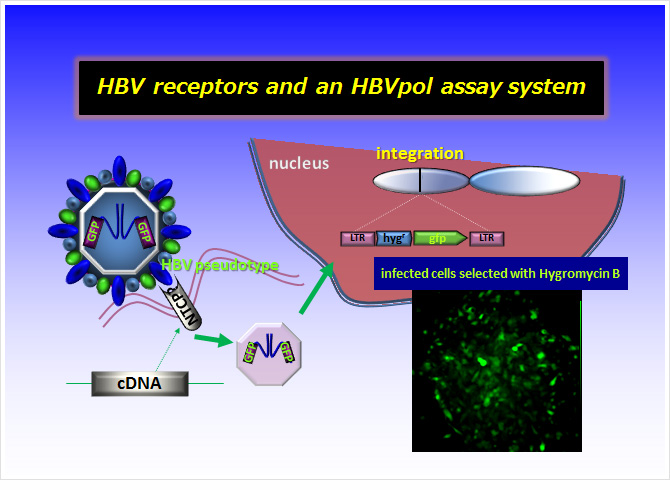
Isolation and identification of viral receptors and establishment of viral infection systems in vitro
Especially, we are trying to isolate and identify HBV receptors for its entry. Although NTCP was reported as a candidate in 2012, it may not be enough to permit HBV infection. We are assuming that there are some other molecules involved in the HBV entry and trying to establish complete and very easy system for HBV infection in vitro.
Expression and purification followed by elucidation of NTCP structure
NTCP should be a component for the HBV entry molecules. Thus, we are trying to express high quantity of NTCP by using microorganisms and purify at high grade in order to generate specific antibodies against it and elucidate the 3D structure. Such approach will lead to explore new drugs and strategies to treat HBV infection.
Establishment of HBV polymerase activity assay system and invention of new anti-HBV drugs
It had been a half century already since HBV was found, but there have been still a lot of mysteries about this tiny virus, which has a just 3.2kb partially double stranded DNA genome and encodes only four genes generally. We have not reach to exploit its polymerase assay system. HBVpol has reverse transcription activity in the HBV replication pathway. It should be very hard to express HBVpol with high amount in microorganism, but we must overcome this situation to develop new drugs against HBV infection. Successful overexpression and high grade purification will facilitate to find new chemical substances to regulate HBV replication/amplification.





